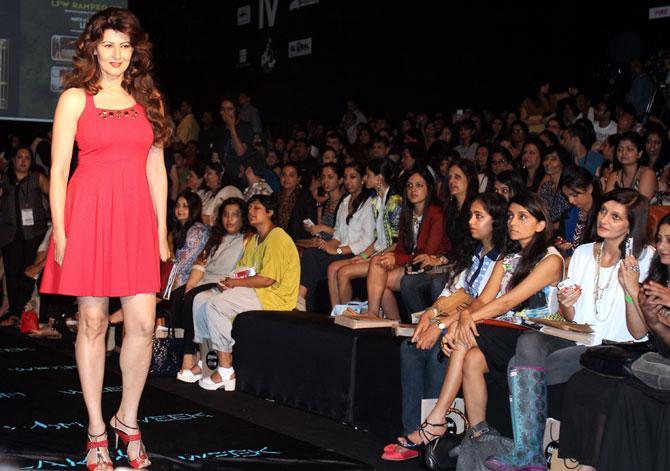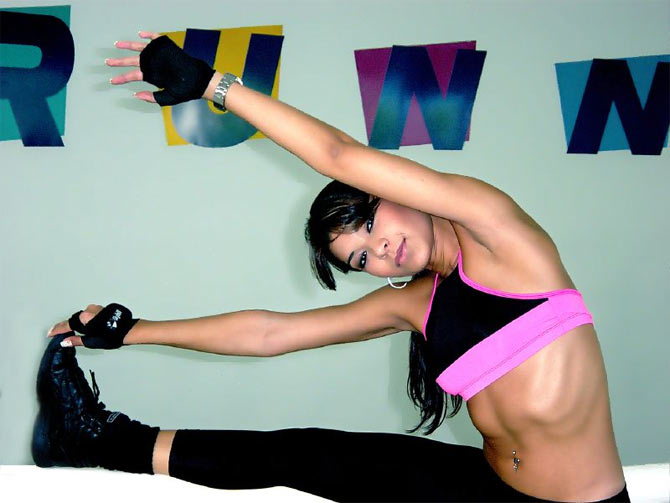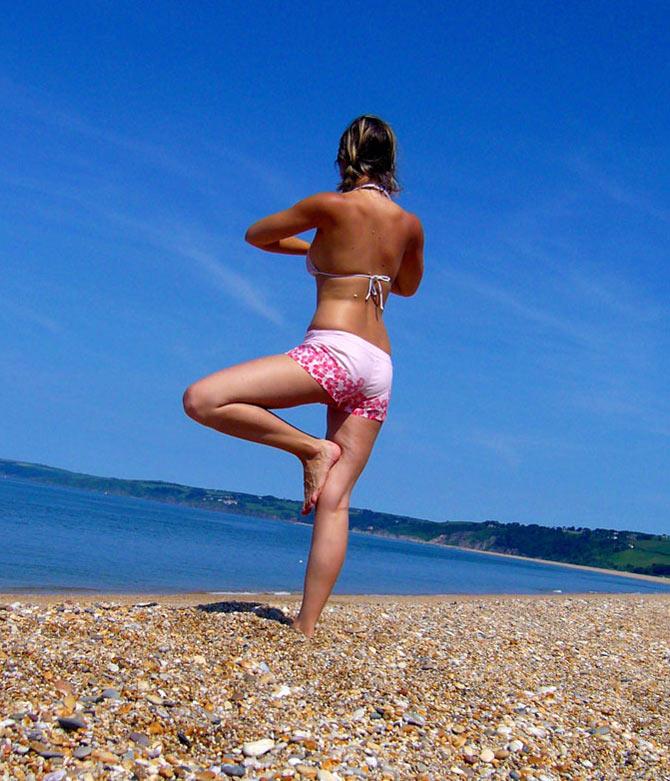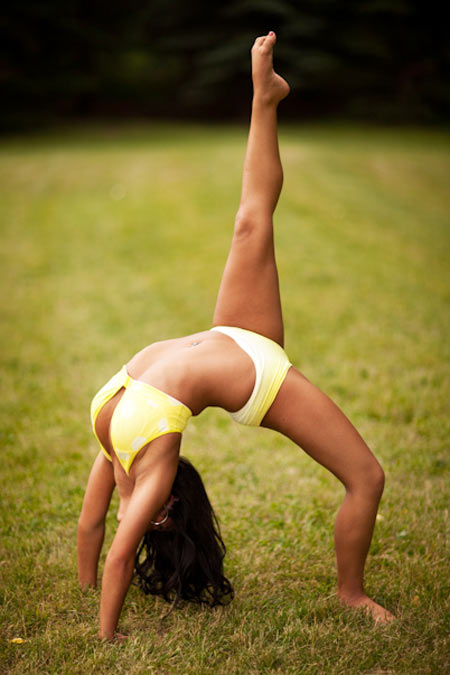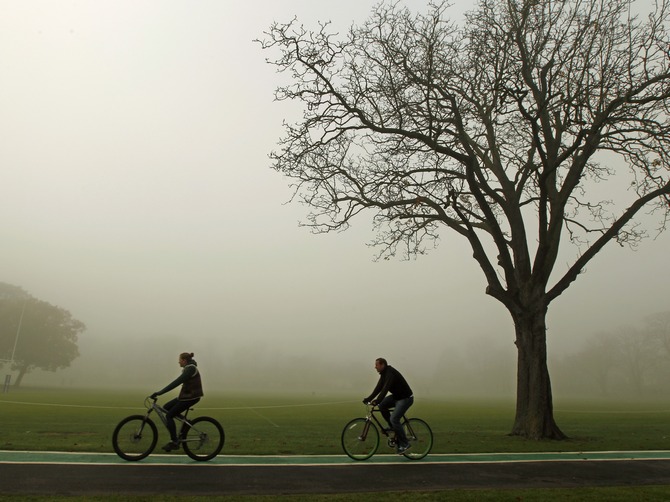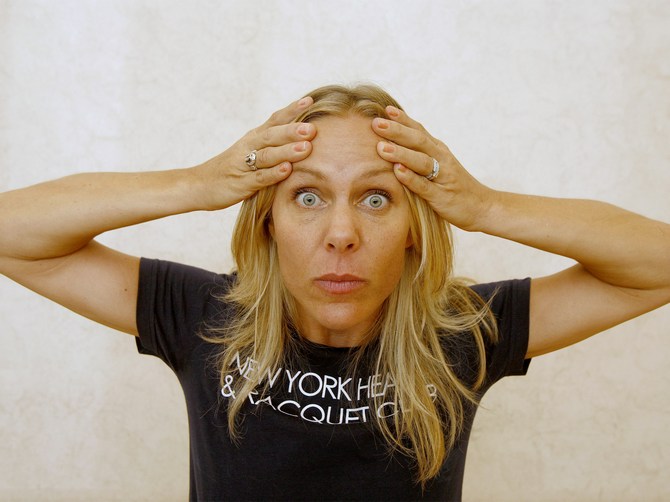 | « Back to article | Print this article |
Revealed! The secret to staying young and looking great
Feeling old? Take charge of your life says Shameem Akhtar.
We are in a very ageist society, which is very conscious of youthfulness as an ideal.
Most products depend on the young to sell it, including products that are not necessarily targeted at youth.
Research too is funded lavishly for elixirs that promise to restore youth.
As much money is spent on this as in controlling disease or extending life.
In fact longevity, which was an ideal a few generations ago would not make much sense without youthfulness as its complement.
Who wants to live long unless one manages to live with youthful vitality?
So, here are a few markers for youthfulness which medical research identifies.
If you pass the tests that set these markers, then it does not matter how old you are chronologically. You are biologically still young.
Chronological age is what your birth certificate states.
Biological age is what your bones, tissues and insides say about it.
You can appreciate that the latter is more truthful.
Shameem Akthar, yogacharya trained with the International Sivananda Yoga Vedanta Center, lists five markers for youth that will help you track your "real" age.
Flexibility
Flexibility is a sign of youthfulness, especially of the spine.
In the very young in fact this is how they can play tough and yet bounce back.
Though the jury is yet decided on whether stretching is important as part of sports training, serious martial artists will inform you that part of the ability to be effective on the field, in the ring and for recovery itself comes from the flexibility of muscles and joints.
In the muscles this connection is easy to establish: the type of muscle that can endure a stretch is the red muscle fibre, often referred to as the endurance muscle.
It also is red because it gets more oxygen, blood supply and nutrients gearing it for repairing, while the white muscle fibre is a power muscle designed for speed.
Perhaps this connection to healing is what makes this type of muscle -- associated with endurance and flexibility -- a marker for youthfulness.
Stretching, pilates, yoga, martial arts, certain types of dances like contemporary and ballet, help develop this type of muscle and training in these may be what you must veer towards flexibility and youthfulness.
Balance
The sense of balance is part of the kinesthetic intelligence of the body.
It has to be deliberately cultivated because in humans many of the skills that were associated with balance are lost as we age.
This kinesthetic awareness is also a skill of the cerebellum, an animalistic part of our nervous system.
Many of the functions of the cerebellum are still not clear, but it is clearly known to be associated with memory, co-ordination skills, cognitive intelligence, problem solving, and impulse control.
For many people who have the outmoded idea that the mind is separate from the body, this connection between the skills of the mind and the body may be astonishing.
However, once you make the connection, you can appreciate standing on one leg with control, skill and elegance could make a difference to how you conduct yourself in the rest of your life as you age, and the physical control that is required as aging attacks the body.
And that to be young could become easier if you retrain your body through practices like yoga, cycling, dance and cross-training.
Co-ordination
One of the fastest signs of aging is the lack of co-ordination between the limbs and the rest of the body.
This explains why the elderly tend to drop things (because their eye-hand-function co-ordination has become wobbly) or have falls (again because they have lost the ability to make the connection between the foot and where it must be placed -- a co-ordination skill).
These are very obvious signs of aging and are immediately recognised as age-markers.
But some not so evident failing in co-ordination happens when a sedentary person joins a physical training class, even a simple one, and finds it difficult to follow basic instructions involving raising the leg or moving the hand.
This can be even more evident if two or three movements of the body are simultaneously invited, suggesting the confusion of the brain as it tries desperately to recall skills it has lost!
Children, though unable to follow instructions due to linguistic issues, will be able to copy an instructor's movements.
Often those who have not used their body wisely and have allowed it to age, through sedentary living, will find that even imitating simple movements become difficult.
However, it is wise to stem the rot, by joining classes -- dance, yoga, gym, playing any games (such as tennis, badminton, all ball games) can help rewire the co-ordination skills back into the body.
Co-ordination involves not just the brain, but also nerve centres, the musclo-skeletal system, the cerebellum and eye-limb connections.
Building them back into the body through physical training that challenges these systems could be an easy route back to youthfulness.
Mental agility
Mental agility does not mean just solving tough mathematical formula.
It could involve crossing the road without having a run-in with a biker; or completing the daily crossword in your newspaper.
It could mean being able to decipher a map, or learning to use new-fangled gadgets.
These include the confidence to take on fresh challenges and not hide behind habits.
For many of us habits are good ruses to develop confidence. But to develop mental agility, which is a marker for youth, you have to be able to think out of the box.
It is not a specific skill but a gamut of them, and also comes from an attitudinal shift, that interestingly enough is determined by a neurochemical.
The hormone oxytocin, which is a feel-good hormone, is also referred to as the explorer hormone because it excites the mind to fresh challenges.
Clearly, mental agility has a biological basis.
It is exciting to think that it can be cultivated by simply introducing oneself to new hobbies.
It can even come from reading a newspaper that you are not habituated to. Or taking a new route to work.
It can come from trying out a new recipe, or reading a book you normally would not want to!
Then, some of the youthful adventurousness returns!
The zest-of-life association with mental agility is what makes this skill a definitive marker for youth.
Firm skin
This one is a tough one to cultivate as you age.
However, it is not so elusive and does not necessarily come out of expensive cream elixirs that promise to erase wrinkles.
A firm skin suggests that the tissue underlying it is fit enough to regenerate.
This can be something simple as eating the right foods that support tissue repair.
Equally, the bones under the skin act as a foundation.
Most of the collapse of the skin and tissue that supports it comes from fragile bones.
To challenge the bones through proper and regular workout that involves the face also (yoga, dances, for instance) could mean that the bones will be in top condition.
When the bulwark is strong the soft tissue (skin) that rests on it will also be firm. Some amount of sunlight that does not harm (before 10 am and after 3 to 4 pm is ideal to escape the UV damage from this) also keeps the bones strong enough to act as supportive tissue to the skin.
Ensuring proper blood flow to the skin, through the right skin is an easy way to look and feel young.
